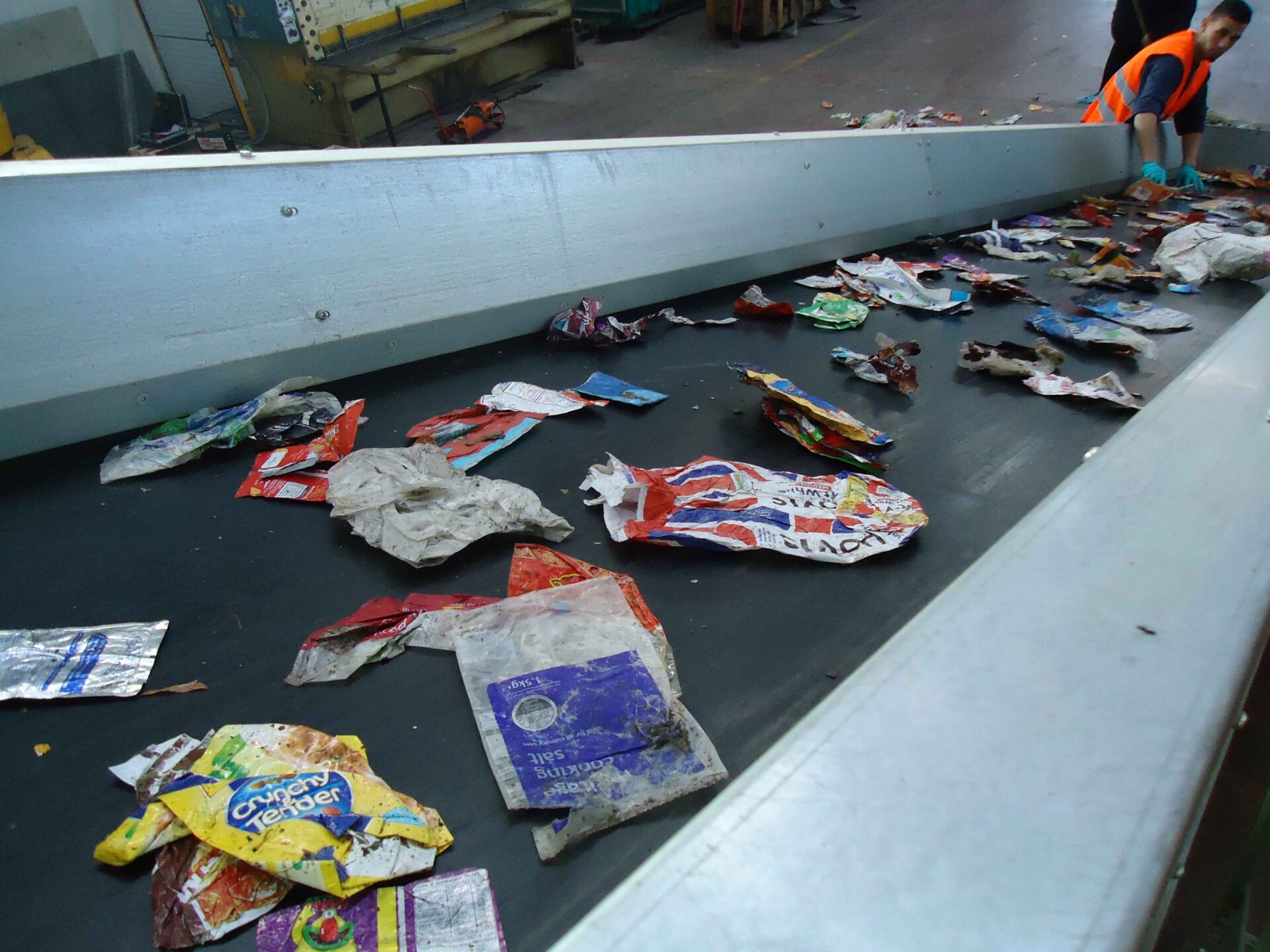While methods to detect different polymer types, such as fluorescent pigments and digital watermarks, offer exciting potential they should be seen as a way to safeguard recyclate quality, asserts Richard McKinlay, Head of Engineering & Research at the resource recovery specialist.
Meanwhile, existing Near Infrared (NIR) technology still has much ‘unexploited potential’ in recovering more packaging such as polypropylene (PP) from rigid plastics, polyethylene (PE) and PP films, which would go a long way to increasing recycling rates, he suggests.
Diversification in the plastics packaging market is leaving the established infrastructure behind. NIR technology detects polymer type, which for many years was sufficient to recover high quality PET, HDPE, LDPE film and PP, but this is changing.
Innovation in packaging has led to a more complex waste stream that contains many different components. For example, a shift for UHT milk from recyclable HDPE bottles into opaque PET containers has a negative effect on recycling. The growing use of PET in non-food products can lead to challenges when using recycled PET in new food packaging.
“This shift has brought forward the need for an alternative to NIR that can sort material on more criteria, to protect existing recycling processes and drive up quality to access higher value markets,” says Richard.
Several projects, bringing together companies throughout the supply chain, are currently researching marker techniques that provide detailed information on what packaging can and cannot be recycled. Two methods of marking being developed are fluorescent pigments and digital watermarks.
Invisible in normal lighting conditions, fluorescent pigments can be detected under ultraviolet light. Specially chosen for optimum performance while minimising cost, they are safe for food contact applications.
 Digital watermarks are patterns that can be applied in label or packaging design, or directly to the polymer surface. Having minimal visual impact, they can be detected by a camera and created at very low cost. Each marker can hold a large amount of data, such as material composition, original contents and suitability for recycling.
Digital watermarks are patterns that can be applied in label or packaging design, or directly to the polymer surface. Having minimal visual impact, they can be detected by a camera and created at very low cost. Each marker can hold a large amount of data, such as material composition, original contents and suitability for recycling.
The development of fluorescent pigments is significantly further ahead than digital watermarking, with some European projects, such as the Polymark project, already completed and others close to completion.
“There is, therefore a better understanding of efficacy of fluorescent pigments. There are still many unknowns about watermarking and more independent studies are needed,” continues Richard. “Watermarking could be a powerful tool in the future because of how much data it can hold and brand owners can gauge how much of their packaging is recycled.”
For example, the same watermark can be used by manufacturers during production, and by consumers to give product information such as nutrition or recipes. You could even develop a ‘smart bin’ where you show the bin the packaging and it tells you if it can be recycled or not. Finally, the watermark is used by the recycler to know where to sort the material to for maximum value recovery.
This ability to share data across the value chain may be very powerful. However, it is only part of the solution, and packaging must be fundamentally recyclable in an economic way, and so compromises should not be made because of the ability to sort the different materials.
While markers offer a useful way to detect differences between food and non-food packaging, such as PET drinks bottles and PET detergent bottles, Richard warns that taking this route could lead to manufacturers using packaging that has less value at end of life in the future. For example, using more PET in non-food applications and reducing the subsequent quality of recyclable material.
He concludes: “To me, although this type of technology may be a very powerful tool for information gathering, it is not an answer to increasing recycling rates. In my opinion, this marker technology should be seen as a way to safeguard quality of materials for recycling. In terms of increasing recycling rates, I think it is unlikely it will have any significant impact.
“The only way to increase recycling rates is to do more sorting on more of the plastic fractions that are currently going to energy recovery because it’s not economically viable to recover them. In order for this to happen, a fundamental change in the economic drivers for recycling is needed.”
Axion Consulting is part of the Axion Group that develops and operates innovative resource recovery and processing solutions for recycling waste materials. The Group works with a wide range of clients, from Government agencies and local authorities to companies in diverse commercial sectors, on the practical development of new processing and collection methods to recover value from waste resources.











